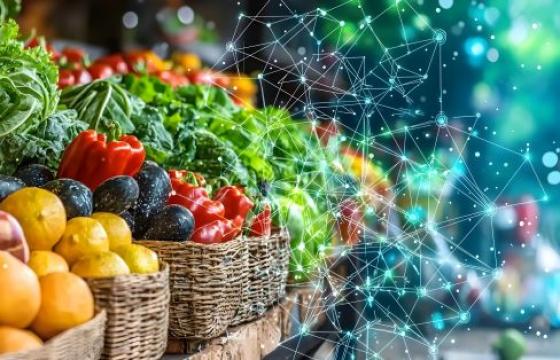
Did you know 1.6 million people fall ill every day from consuming unsafe food? Ensuring food safety isn’t just about compliance – it’s about protecting health, reducing waste and fostering trust across the Supply Chain.
This weekend marks World Food Safety Day, a World Health Organisation-backed initiative that is this year focusing on the scientific knowledge helping us understand what makes food unsafe and how to prevent the consumption of unsafe food. According to the WHO, an average of 1.6 million people get sick every day from consuming unsafe food.
There are many scientific organisations conducting vital research into food safety and how to prevent foodborne diseases, but we want to emphasise how digital technologies can support the fight for food safety and how a reduction in food waste can be a valuable by-product.
From farm to fork, maintaining the integrity of temperature-sensitive products is a complex task that demands precise control, constant monitoring, preventative action, and rapid response to potential risks to establish safety, quality, and shelf life.
The need for safety and the strive for quality
A line retailers are constantly treading is the dual need for food safety and product quality. Meeting these requirements is critical to protect consumers, preserve the integrity of food products, and reduce unnecessary loss. To achieve this, accurate control and continuous monitoring of refrigeration systems is a necessity.
This is where digital technology steps in. By incorporating an IoT software layer to existing cooling systems, smarter and more efficient operations can be unlocked. These cutting-edge solutions provide real-time insights into machine health, performance, setup, and even the specific contents of each unit when connected to merchandising systems. Millions of data points are continuously collected and analysed, offering retailers unparalleled visibility and control over their operations, ensuring refrigeration systems are not only set up correctly, but are consistently operating optimally to enhance product quality and protect safety.
If an anomaly is detected by the software – such as unwanted temperature fluctuations – the solution can enact immediate corrective responses to the machine. This intervention could involve automatically alerting a refrigeration engineer with prioritised fault details, or dynamically reconfiguring machine settings based on the actual produce inside each unit. These targeted interventions not only prevent spoilage, but also extend shelf life and reduce overall waste, ensuring both safety and quality remain uncompromised.
The value of increased visibility
Visibility over machines, processes, data, and movement also plays a pivotal role in enabling enhancements in efficiency, reliability, and sustainability within the intricate web of the food supply chain. With this greater visibility, advanced insights can be gathered, and food safety and waste risks reduced.
According to the UN, food that is lost and wasted accounts for 38% of total energy usage in the global food system and, while tracking the movement of orders such as our food shops or takeaways has become the norm, there is substantially less information when it comes to movement of goods across the supply chain. With consumers becoming increasingly interested in the origins of the ingredients they eat, supply chain companies should be turning to available digital solutions, such as IoT that can gather, monitor, and manage real-time data from critical equipment, to proactively establish end-to-end traceability – including at the point of sale – mitigate waste, and ensure the safety and quality of produce during distribution and transportation. This will prove crucial in building better consumer trust and ensuring food safety isn’t compromised.
The unintended benefits of ensuring food safety
The benefits of ensuring food safety are two-fold. In addition to consumers feeling comfortable that the food they are purchasing is safe to consume, food is less likely to be thrown away.
With so much food in the UK sold in plastic packaging – despite calls for the government to ban packaging on 21 fruit and vegetables sold in plastic packaging by 2030 – the risks of inadequate food storage are staggering. The UK throws away around 9.5 million tonnes of food every year, and over one-third of all food produced globally goes to waste – that’s three billion tonnes. As well as the food itself, we must consider what else is wasted by this action. Think of the impact of the manufacturing and logistics processes that were for no end, as well as the amount of plastic that’s wasted as a result. If it is stored and monitored correctly by digital technologies like IoT, the food purchased by consumers might last much longer and reduce this harmful environmental impact.
This is the focus of World Environment Day, which is also this week. It is calling for collective action to be taken to tackle the plastic pollution that is causing 11 million tonnes of plastic waste to enter the ocean, accounting for an annual social and environmental cost of between $300-$600 billion.
To tackle the vast scale of issues like food safety and plastic pollution, every sector must take every step it can. These problems will not be resolved by the manufacturers themselves but must be seen as a collective battle for the entire food supply chain. If digital technologies like IoT can make even a small difference to these causes, we can be proud of the work we do.